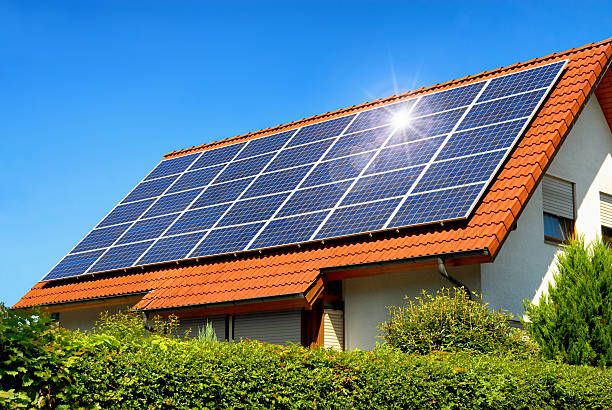3kW Solar Rooftop: Power Output, Cost & Savings
With rising electricity bills and growing environmental awareness, many homeowners in India are turning toward solar energy as a reliable, long-term solution. A 3kW solar rooftop system is one of the most popular configurations for residential use, offering a perfect balance between affordability, energy generation, and sustainability. Whether you’re planning to reduce your monthly electricity expenses or want to lower your carbon footprint, understanding how a 3kW rooftop solar system works can help you make an informed decision.
What is a 3kW Solar Rooftop System?
A 3kW solar rooftop system is a residential-scale solar power solution that typically consists of:
- 6 to 8 solar panels (depending on wattage)
- An inverter
- Mounting structures
- Wiring and safety components
- Net metering setup (optional but recommended)
Installed on rooftops, this system generates enough electricity to power most small to medium-sized homes, especially those with energy-efficient appliances.
In the context of Indian households, a 3kW Solar Rooftop setup can cover daily electricity needs such as lighting, fans, television, refrigerator, washing machine, and even air conditioning for a few hours.
Power Output of a 3kW Solar Rooftop
On average, a 3kW system generates about 12–15 units (kWh) of electricity per day, depending on geographic location, sunlight exposure, and weather conditions. Here’s what that looks like annually:
- Daily Output: 12–15 kWh
- Monthly Output: 360–450 kWh
- Annual Output: 4,320–5,400 kWh
This output is sufficient to handle 70%–100% of the power requirements for a typical urban Indian home. Keep in mind, solar panel efficiency and seasonal changes (monsoons, cloudy winters) can affect this slightly.
Estimated Cost of a 3kW Solar Rooftop
The cost of installing a 3kW rooftop solar system in India has come down significantly over the past few years due to subsidies and advancements in technology. Here’s a cost breakdown:
| Component | Approx. Cost (INR) |
|---|---|
| Solar Panels | ₹90,000 – ₹1,20,000 |
| Inverter | ₹25,000 – ₹40,000 |
| Mounting & Wiring | ₹15,000 – ₹25,000 |
| Installation & Labor | ₹15,000 – ₹20,000 |
| Total (Before Subsidy) | ₹1,45,000 – ₹2,00,000 |
| Subsidy (Up to 40%) | ₹50,000 – ₹75,000 |
| Net Cost (Post Subsidy) | ₹90,000 – ₹1,25,000 |
Government subsidies under the PM Surya Ghar Muft Bijli Yojana and state-level solar incentives can reduce the cost substantially. Always check with your local electricity board or MNRE-registered installer for exact figures.
Monthly and Annual Savings
One of the biggest advantages of switching to solar is the long-term cost savings on electricity. With a 3kW system generating around 400–450 units monthly:
- If your power rate is ₹7/unit, that’s a saving of ₹2,800–₹3,150 per month.
- Annually, this adds up to ₹33,600–₹37,800.
- Over a system lifetime of 25 years, you can save upwards of ₹8–10 lakhs.
Additionally, with net metering, any excess power generated can be fed back to the grid, earning you credits or reducing your bill further.
Is a 3kW Solar Rooftop Right for You?
Here are a few indicators that a 3kW rooftop solar system might be suitable:
- Your average monthly electricity usage is between 300 to 450 units.
- You live in a region with good sunlight exposure (ideally 4–5 sun hours per day).
- You have 250–300 sq. ft. of unshaded rooftop space.
- You’re looking for a cost-effective solution with a return on investment within 4–5 years.
Installation Considerations
Before proceeding with installation, consider the following:
- Roof Structure & Space: Make sure the roof is strong, stable, and has sufficient space for the panels.
- Orientation: South-facing rooftops receive the maximum sunlight in India.
- Net Metering: Coordinate with your state DISCOM to register for net metering to offset power bills.
- Quality Components: Choose branded panels and inverters with at least 25-year performance warranties.
- Maintenance: Clean panels once a month and schedule annual servicing to maintain efficiency.
Environmental Benefits
Apart from financial savings, a 3kW solar rooftop system has significant environmental benefits:
- Reduces your household carbon footprint by about 2.5 to 3 tons of CO₂ per year.
- Helps lower dependence on fossil fuels.
- Promotes sustainable and self-reliant energy habits.
ROI and Payback Period
The payback period for a 3kW system typically ranges between 4 to 5 years, considering the upfront cost and monthly savings. After the break-even point, the system continues to generate free electricity for another 20 years or more.
Conclusion
Investing in a 3kW Solar Rooftop system is a smart and sustainable decision for any homeowner looking to reduce their electricity bills, contribute to environmental conservation, and increase energy independence. With government support, easy financing options, and long-term benefits, it’s one of the best upgrades you can make for your home today.
Before installation, assess your energy needs, rooftop space, and talk to a certified installer to ensure the setup fits your lifestyle and future energy goals. Go solar, and let the sun power your savings!










Leave a Reply
Want to join the discussion?Feel free to contribute!